
These are not the supple romantic flowers you used to know, nor Van Gogh’s flaming flowers. They are pointed and piercing, spinning in the dazzling light of burning iron. With the materiality of sharp swords and spears, they also seem immaterial. Caught between gushes of coldness and heat, they are in a state of constant unfolding and revolving. Liu Yangwen does not paint flowers, but forges iron or flower-like life forms with cold flames.
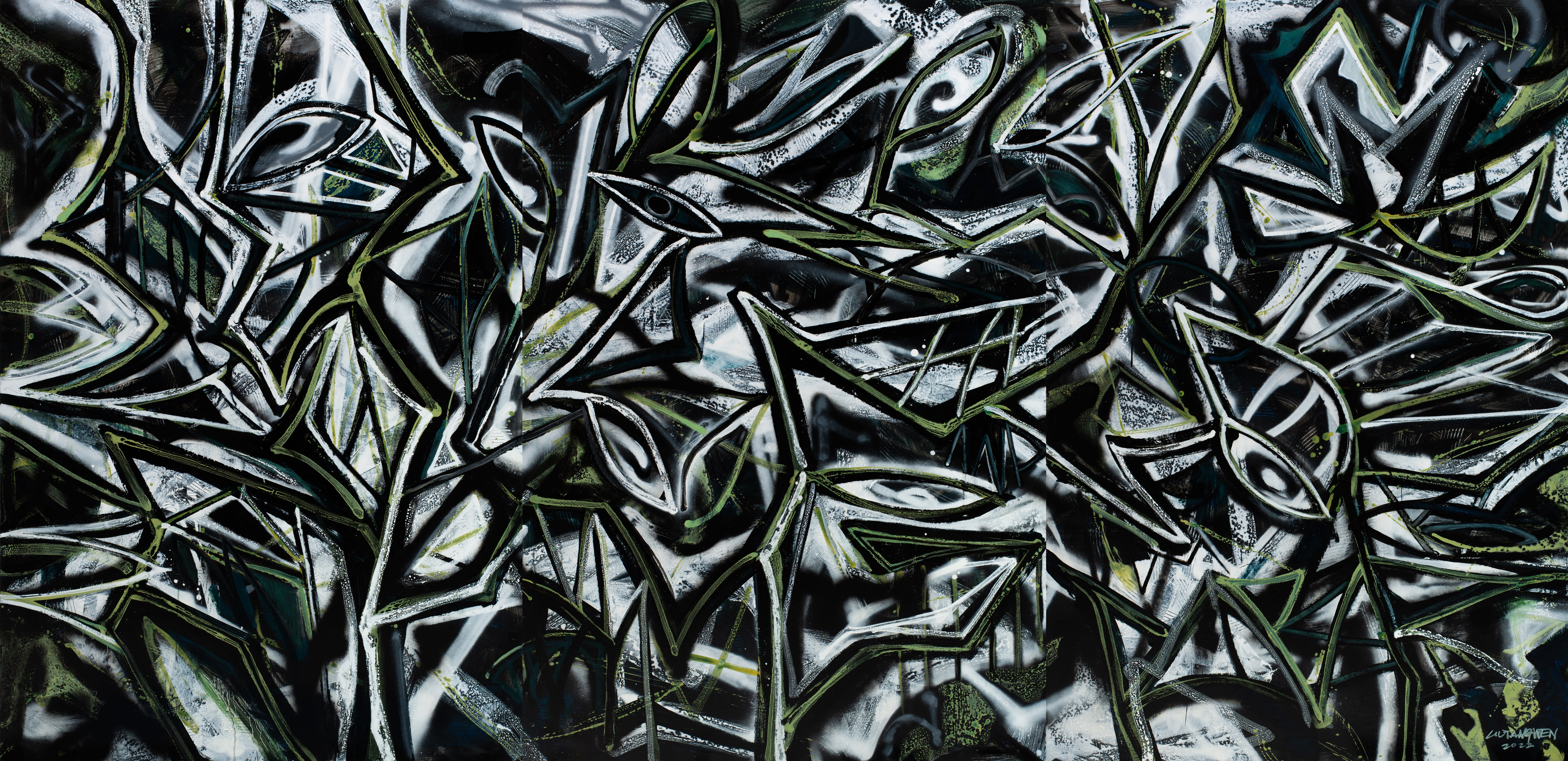 Forging the Wild, 2022, Oil on canvas(Triptych), 190 x 390 cm (total)
Forging the Wild, 2022, Oil on canvas(Triptych), 190 x 390 cm (total)These are flowers intended to be seen as non-flowers which still have the form and the will of flowers. The whole painting reveals an unyielding will which is at the heart of the mystery of this art. Painting is always an unconcealment of individual willpower. The will of the flower is but a projection of the young artist’s willpower. With his focus, his sense of the paradoxical relation between the hot and the cold, and the tension of shifting back and forth between the concrete and the abstract, Liu Yangwen gives this seemingly old subject a fascinating new form.
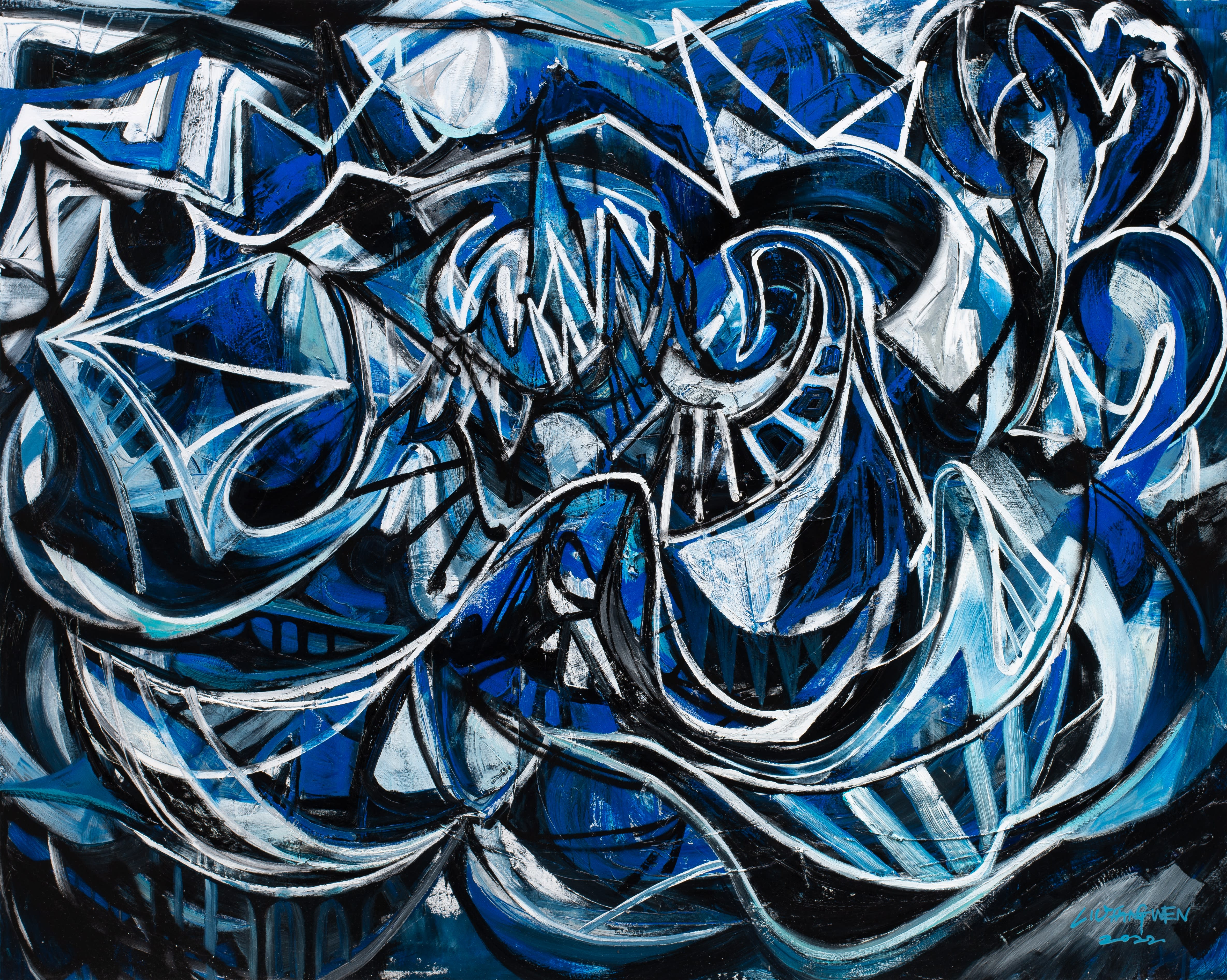
Silver Flower, Blazing Tree, 2022, Oil and acrylic on canvas, 120 x 90 cm
At first sight, the feel of iron creates the impression of the texture and colours of engraved prints. But what is the purpose of this effect? This is neither an anti-oil painting statement nor an imitation of printmaking, but a deeply engraved will and the expression of a resoluteness against loss. All flowers eventually wither, but the painting as an engraving engraves itself in memory, turning lamentation for the loss into remembrance, as the flower becomes a frozen, indestructible image.
While being a still life, the work creates the impression of sharp movement—on a glassy background, the leaves suddenly turn into needles or extended and retracted claws. But sharpness coexists with the softness of a rolling movement. The artist seems to consciously seek to depict this paradoxical relation whose strangeness gives these works a sense of the unexpected. Sharpness inevitably also brings a sense of pain. Achieving the texture of glass, Liu Yangwen recreates the sensation of decorative flowers on stained windows. But here the glass window seems broken. The shattered pieces pierce through the surface and disturb our conventional perception of what flowers look and feel like.
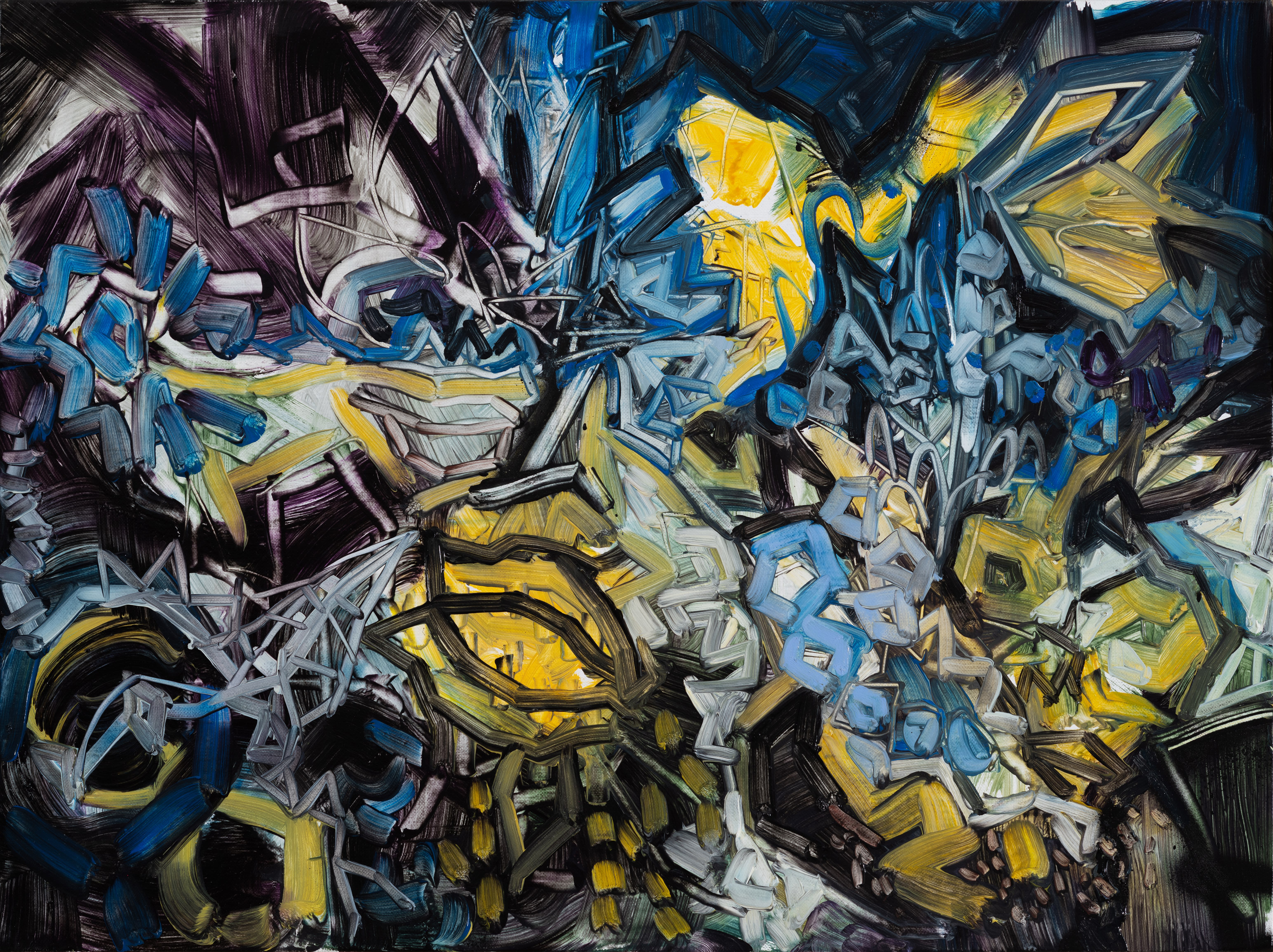
The Blaze of Flowers, 2022, Oil on canvas, 45 x 60 cm
The complex and self-conscious treatment of the relationship between foreground and background gives the painting an inherent sense of depth and movement, as if a mysterious force behind it is shaping the foreground, leaving the painting in a state of uncertainty and the possibility of unlimited variation. There is something of Giacometti’s sketches in these works. With the sculptor's characteristic sense of the carving knife, Liu Yangwen draws countless lines in different directions—the lines of an object that is never completed but always in a state of transition. This continuous remodeling gives objects the vitality of a soul that escapes materiality. Painting is not meant to perfect its object, but to allow it to be continuously reborn before our eyes. Similarly, Liu does not just fix his forms. Starting from basic leaf petals, he moves to a purely abstract construction—a "body of music" in a revolving, spinning rhythm.
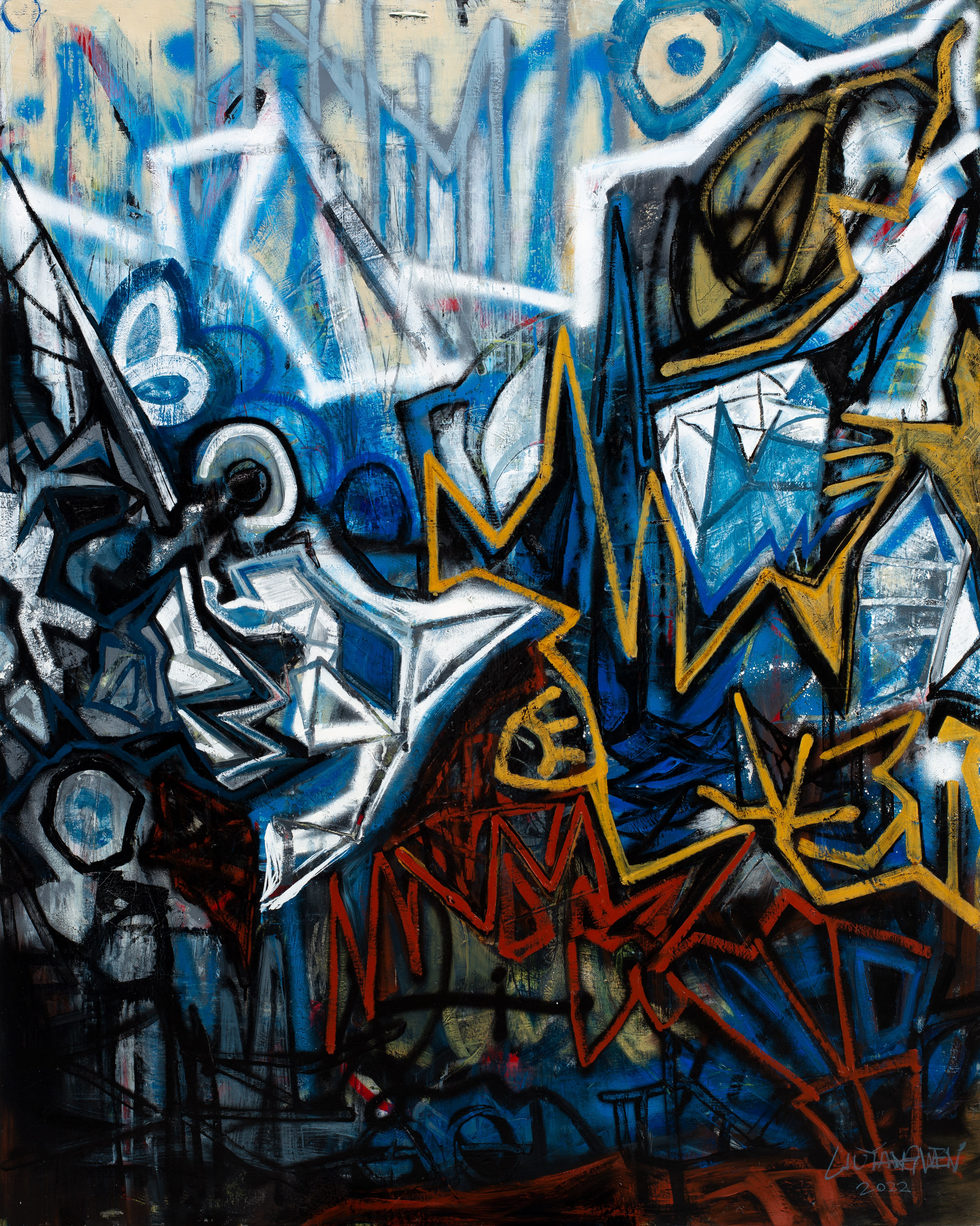
11-3-22, 2022, Oil and acrylic on canvas, 150 x 120 cm
The artist's imagination enters into free reflection on the 'pictorial'. While the work remains deformed, the petals become countless shreds which are then re-organised into abstract pieces and cells. Following the artist’s imagination, we see needles and leaves transform into dazzling eyes, numerous faces or mysterious masks, ancient divine patterns, letters, words, or even astral bodies, streets, buildings, and labyrinths. Between deconstruction and reconstruction of form, Liu presents his own metamorphology of painting, which guides and tempts our gaze.
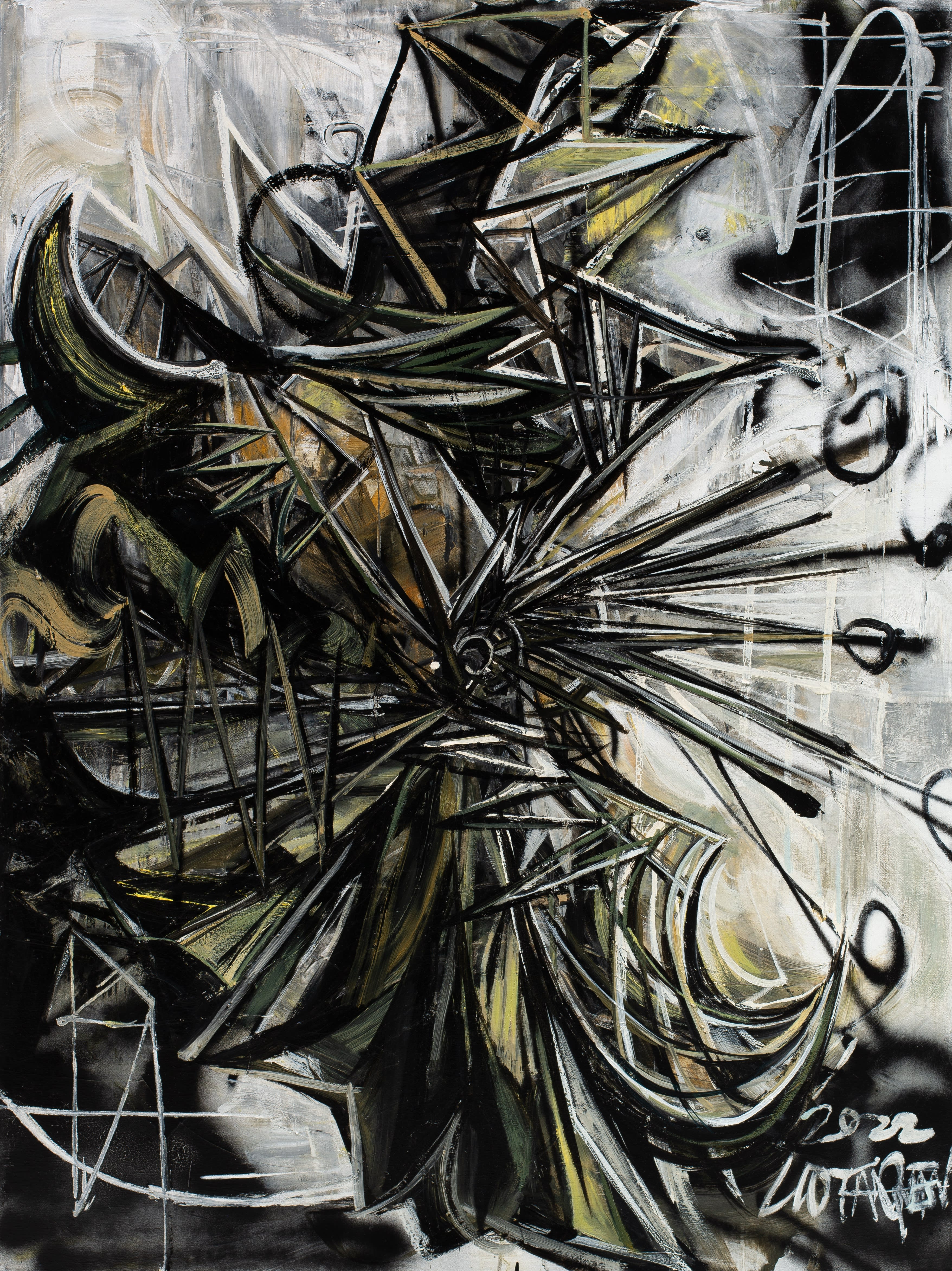
15-9-22, 2022, Oil and acrylic on canvas, 90 x 120 cm
This is a world of endless possibility, folding and turning to produce ever new worlds. This constantly changing, spinning and dazzling world seems to allude to “the doubling mystery, the door to all wonders" that the Laozi speaks of. Entering the secret and playful world of painting, we enter creative imagination and the mystery of creation itself. It is of course never easy for critics to verbalize their own aesthetic experience. Perhaps one should just come to the works and see for themselves: the bright, heavenly eye in these flowers, the etched brushstrokes, the shaded background, the determination. Paintings with such depth of perception make us look forward to Liu Yangwen's work in the years to come.

